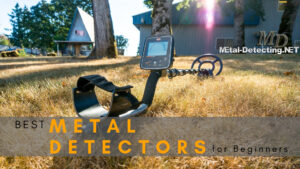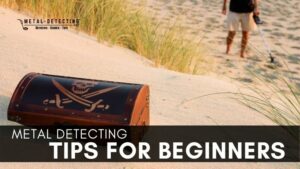If you’re reading this, you’ve probably caught the metal detecting bug, just like I have. And if you’re anything like me, you’re fascinated by the old coins you find and want to know more about their history.
In this blog post, we’re going to dive into how to identify and date old coins that you find while metal detecting.
So, buckle up and let’s get started!
How to Identify and Date Old Coins
Before you can date your coins, you need to know what you’re looking at. Coin identification can be a bit of a puzzle, but with a little patience and practice, you’ll become a pro in no time.
Here are a few tips to help you get started:
Observe Coin Features: The first step in identifying old coins is to carefully examine their features. Inscriptions, images, and symbols on both sides of the coin can offer valuable clues about its origin and age.
Measure Coin Dimensions: Measuring the coin’s size and weight can help narrow down its identity. Use a digital scale and caliper for accurate measurements.
Know Your Coin Metals: Different materials, such as copper, silver, gold, or alloys, can provide insight into a coin’s identity and value. Familiarize yourself with common coin metals.
Utilize Online Resources for Coin Identification: The internet offers a wealth of information on coins. Websites like Numista and CoinWorld can be invaluable resources for identifying your finds.
Dating Old Coins
Look for a Date on the Coin: Many coins have their minting date inscribed on them, making dating a simple task. Start by searching for a date on the coin’s surface.
Check Rulers or Monarchs Depicted on the Coin: Coins featuring images of rulers or monarchs can help determine the time period. Research the reign of the depicted ruler for an approximate coin age.
Examine Coin Design Styles: Coin design styles can offer clues about their age. Older Roman coins, for example, often have a more primitive style than later, more intricate designs.
Consult Coin Reference Books: Coin reference books, such as the “Standard Catalog of World Coins” series and “The Official Red Book: A Guide Book of United States Coins,” are essential resources for identifying and dating coins.
Seek Expert Opinions: Join coin collecting or metal detecting groups to ask experienced collectors for their opinions when stumped on a coin’s identification or age.
Tips for a Successful Metal Detecting Experience
Research Potential Coin Hotspots: Discover the best locations for old coins by researching historical maps, old roads, and other signs of human activity.
Master Metal Detecting Maps and Online Resources: Learn how to use metal detecting maps and online resources to increase your chances of finding old coins.
Understand Your Metal Detector: Become familiar with your metal detector and its settings to optimize your coin hunting experience. Our beginner’s guide to metal detecting can help you get started.
Clean Coins Properly: Clean old coins gently and effectively using our guide on cleaning coins found while metal detecting, avoiding harsh chemicals and abrasive methods.
Document Your Coin Finds: Keep a record of your coin discoveries with photos, descriptions, and relevant details, making it easier to track your progress and share your findings with fellow enthusiasts.
Stay persistent: Coin hunting can be a challenging hobby, but don’t get discouraged! Stay persistent, and you’ll be rewarded with some amazing discoveries.
Final Thoughts
There’s nothing quite like the thrill of unearthing a centuries-old coin while metal detecting. With these tips and tricks for identifying and dating your finds, you’ll be well on your way to becoming a seasoned treasure hunter.
So, grab your metal detector, do your research, and hit the field – you never know what you might find! And most importantly, have fun and happy hunting!


